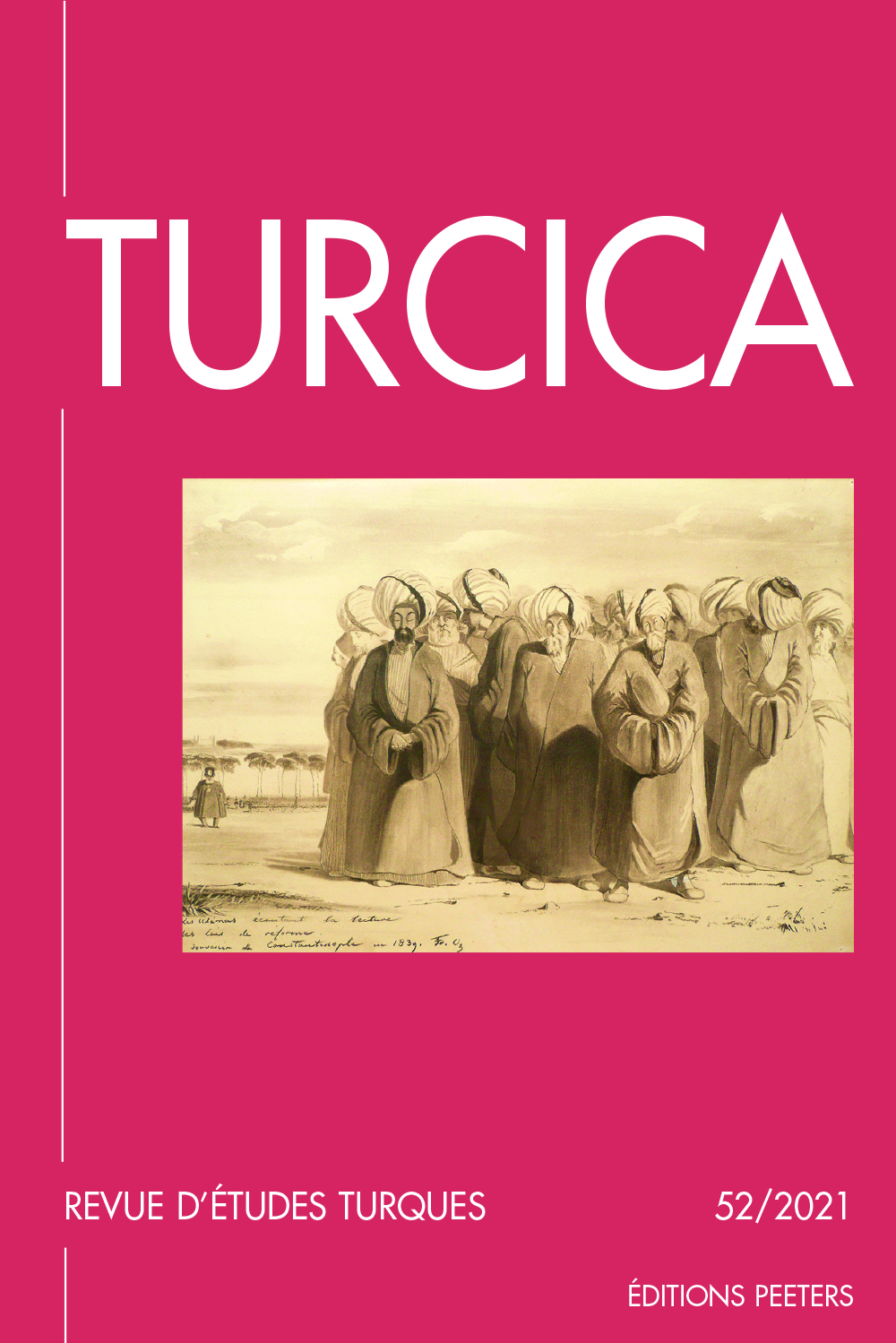 previous article in this issue previous article in this issue | next article in this issue  |

Preview first page |
Document Details : Title: Les Patmiotes, contribuables ottomans (XVe-XVIIe siècles) Author(s): VATIN, Nicolas Journal: Turcica Volume: 38 Date: 2006 Pages: 123-153 DOI: 10.2143/TURC.38.0.2021271 Abstract : Les archives du monastère de Saint-Jean fournissent une abondante documentation sur la fiscalité à Patmos. Ce qui, au lendemain de la conquête de Constantinople, était un tribut versé par un petit État vassal devint bientôt un impôt, et les Patmiotes des zimmî constituant pour la Porte une seule unité fiscale, moines et laïcs confondus, jusqu’à la seconde moitié du XVIIe siècle. La terminologie officielle, variable, désignait toujours le même prélèvement forfaitaire (maḳṭû‘) qu’elle justifiait plutôt qu’elle ne le définissait. On note d’autres prélèvements: taxe de frais des percepteurs, «cadeau» au cadi de Cos, à partir de 1583 «cadeau» de brocards vénitiens au ḳapûdân paşa (bientôt remis en numéraire). Vers 1670, la mention d’un harâc-i arâẓî fait écho à la réforme fiscale alors appliquée dans nombre d’îles. Porté par les Patmiotes eux-mêmes, l’impôt alla d’abord au Trésor impérial, puis au ḳapûdân paşa quand l’île entra dans les hâṣṣ de celui-ci à l’avènement de Selîm II. Le montant augmenta régulièrement, passant de 40 pièces sous Meḥmed II à 333 1/3 sous Selîm II. L’apparition du «cadeau» en brocard alourdit la charge fiscale. Si l’unité de compte varia, l’impôt était en pratique calculé en pièces d’or. Vraisemblablement lors de l’avènement de Murâd IV, en juillet 1623, on passa au ḳurûş d’argent. L’analyse de la situation fiscale des Patmiotes montre que, sur leur îlot, ils participaient aux évolutions de l’Empire, auquel ils appartenaient pleinement. The archives of Saint John’s Monastery keep an abundant documentation about the Patmiots’ taxation. The tribute paid by Patmos as a little vassal State after the fall of Constantinople soon became a tax owed by the Patmiots as zimmîs. Till the second half of the XVIIth century, they constituted for the sultans a single fiscal unity mixing monks and the secular population. The varying official terminology refered to the same lump deduction (maḳṭû‘) which it justified rather than defined. One can also mention a tax for the collector’s expenses, a «gift» to the ḳâẓî of Kos and since 1583 a gift of Venitian brocades (soon paid in cash) to the ḳapûdân paşa. The mention of a harâc-ı arâẓî appears ca 1670 in the context of the fiscal reform then applied in many islands. The Patmiots brought themselves the tax, which was first due to the Imperial Treasury, then to the ḳapûdân paşa when the island became part of his hâṣṣ after Selîm II’s enthronement. The amount regularly grew, from 40 golden coins under Meḥmed II to 333 1/3 under Selîm II. The brocade «gift» increased the fiscal pression. The unit of account varied, but the tax was actually calculated in golden coins, then in silver ḳurûş, probably after Murâd IV became sultan in July 1623. The analysis of the Patmiots’ fiscal situation shows that, on their little island, they were involved in the evolutions of the Ottoman Empire, to which they fully belonged. |
 |


